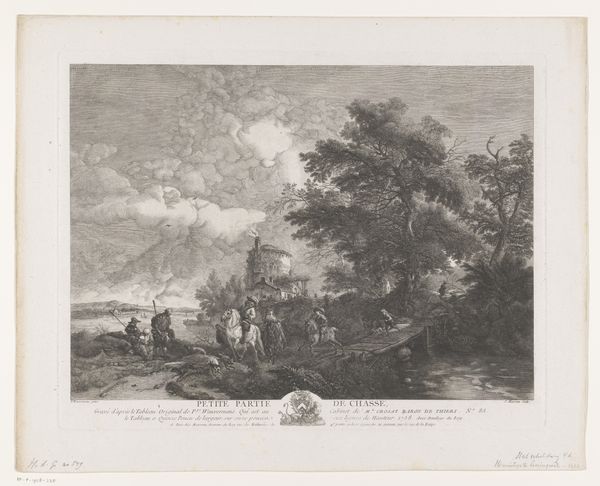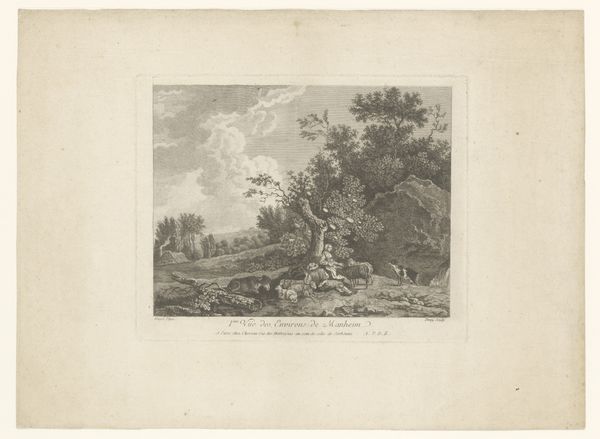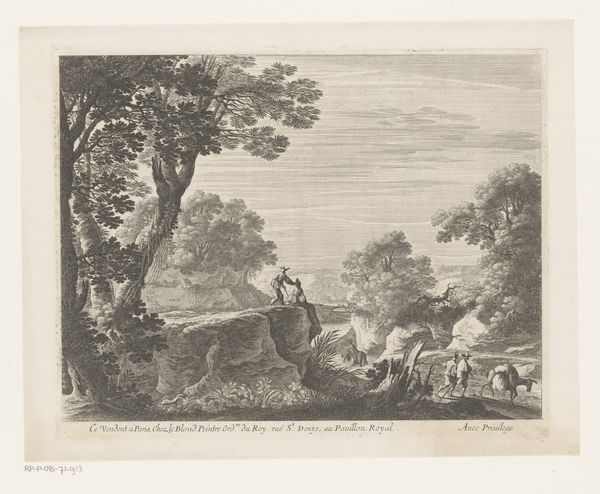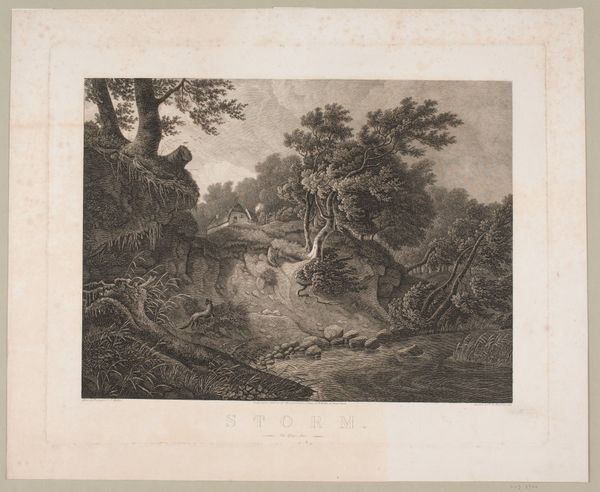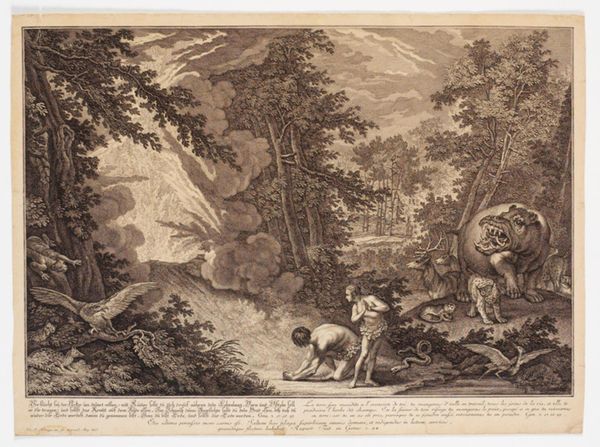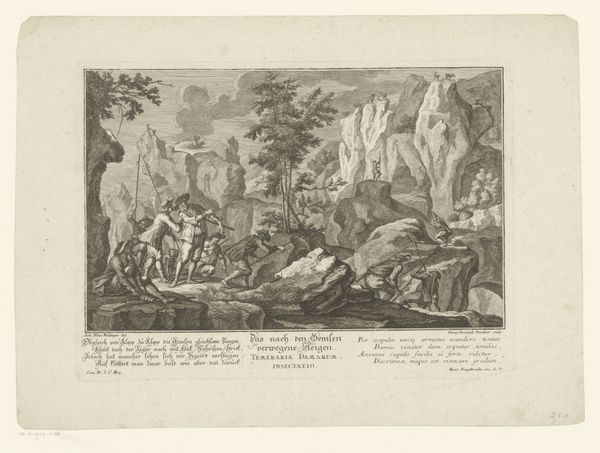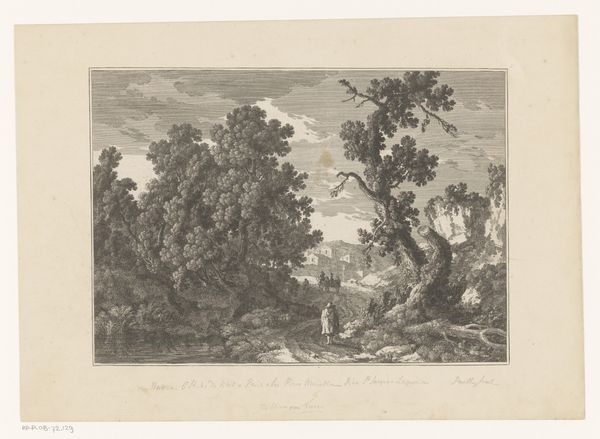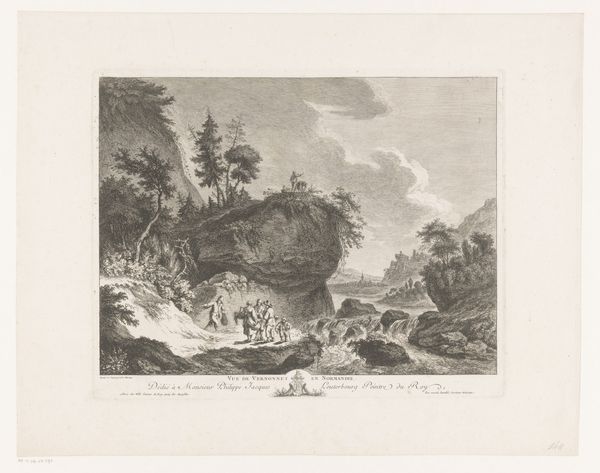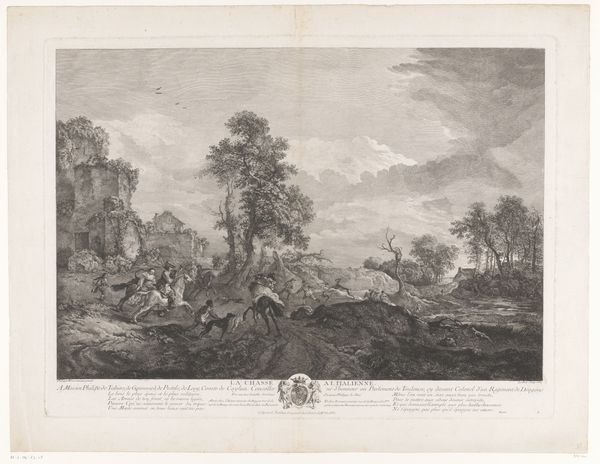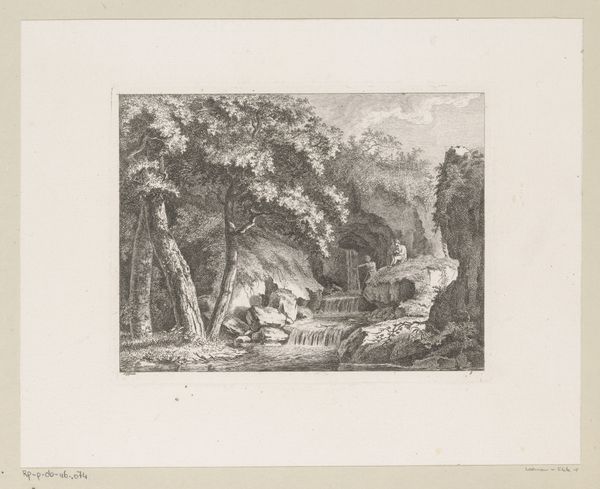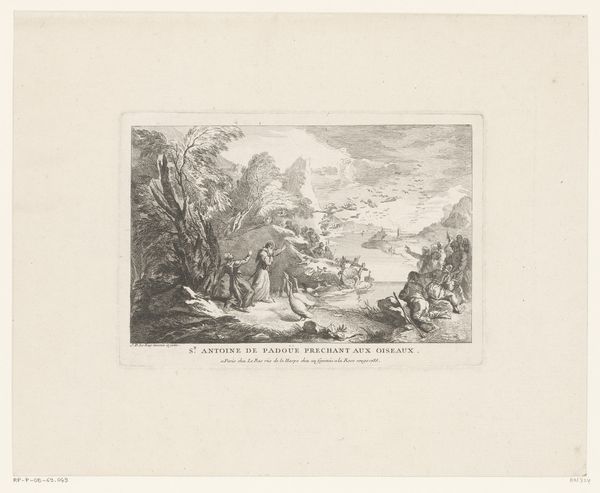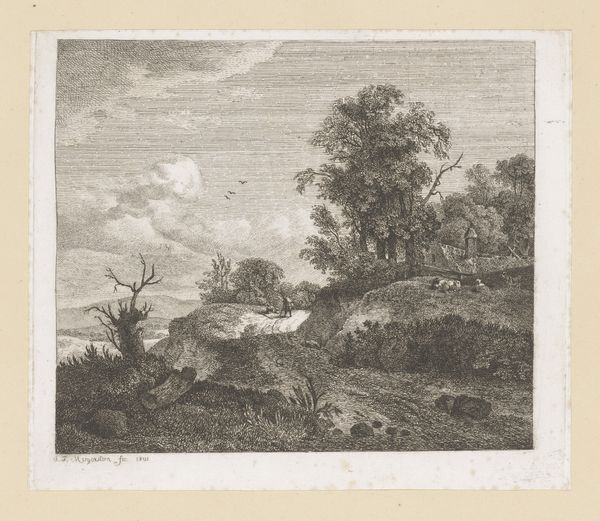
Dimensions: height 364 mm, width 460 mm
Copyright: Rijks Museum: Open Domain
Editor: So, this is "Heldendood van ridder Louis d'Assas, 1760," an etching from around 1777. It depicts a dramatic scene – a night ambush, a fallen soldier. It’s kind of chaotic, but also meticulously detailed. What’s your take? What jumps out at you when you look at it? Curator: The moonlight spilling onto the scene really grabs me. It transforms the forest into this sort of operatic stage, where sacrifice and heroism play out under the watchful, indifferent gaze of the moon. I get lost in the details of the landscape itself - that intricate web of branches, for example. Is it realistic, or is there something...more theatrical happening there? Editor: It feels almost romanticized, even though it's showing a brutal moment. The contrast is striking. Do you think that's intentional? Curator: Absolutely. It’s history painting, which often aims to teach a moral lesson, and here, d’Assas’s bravery in sacrificing himself to warn his comrades is clearly the focus. You see how he's illuminated? Almost angelic, even as he falls. But consider the unseen—what shadows lie beyond those trees? What motivated the soldiers to attack? History often casts its subjects in stark, binary roles, but human motives are far more textured, aren't they? Editor: True, that makes me think about the politics behind this glorification, like who benefits from portraying death this way. Curator: Precisely! Ask yourself: does the image provoke contemplation, or does it attempt to glorify violence under the banner of duty? It’s always a balancing act. What story are they *really* trying to tell? Editor: So much to consider. Thanks for pointing out those layers. Curator: The pleasure’s all mine. Isn’t it fascinating how a simple etching can open up such a rabbit hole of history and interpretation?
Comments
No comments
Be the first to comment and join the conversation on the ultimate creative platform.
